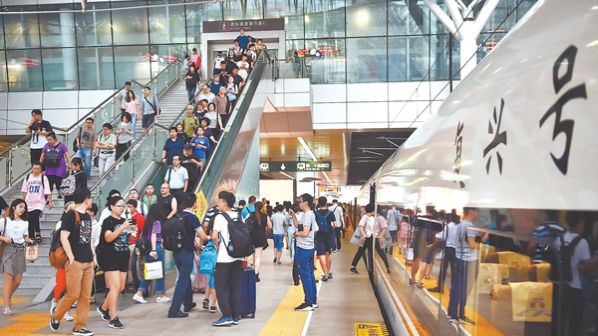Passenger journeys rose by 240 million to reach 2.8 billion, an increase of 9.4%, between January and September 2019, while passenger-km increased by 4.5% to 1158.9 billion.
CR implemented its “one-day map” fare discounts offer on 42 high-speed services which aided the rapid growth in high-speed rail traffic. In the first three quarters of 2019, high-speed trains carried 1.73 billion passengers, a year-on-year increase of 15.3%, and accounted for 63.2% of total passenger traffic, an increase of 3.7 percentage points year-on-year.
Passenger traffic was particularly heavy during this year’s summer vacation period which lasted for 62 days. More than 11 million passengers per day travelled on the rail network on 51 days, which CR says is the highest peak summer passenger volume recorded.
CR says the pilot project to expand the use of electronic tickets has been successful, with 39.93 million passengers on the Hainan Island high-speed railway, the Shanghai - Nanjing Intercity route, and the Kun Dali high-speed railway travelling with e-tickets.
Freight growth
Freight traffic in the first three quarters of 2019 reached 3.15 billion tonnes, an increase of 6.1%, while tonne-km rose by 3.6% to 2196 billion.
Coal traffic also increased by 3.6% to 1.3 billion tonnes up to September. Particularly strong growth was recorded on three lines with coal traffic on the Waji Line increasing by 44.7%, the Tanghu Line by 63.8%, and the Xinjiang Coal Line by 36.8%. Smelting materials totalled 668 million tonnes, up 10.6% year-on-year. Rail freight traffic through the major ports increased by 7.8%, with container traffic showing a 31.2% increase.
Freight traffic between China and Europe increased by 44% to 526,000 TEUs during the first nine months of 2019.

